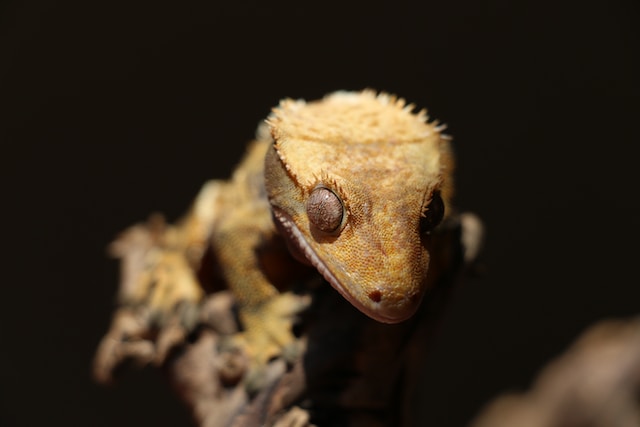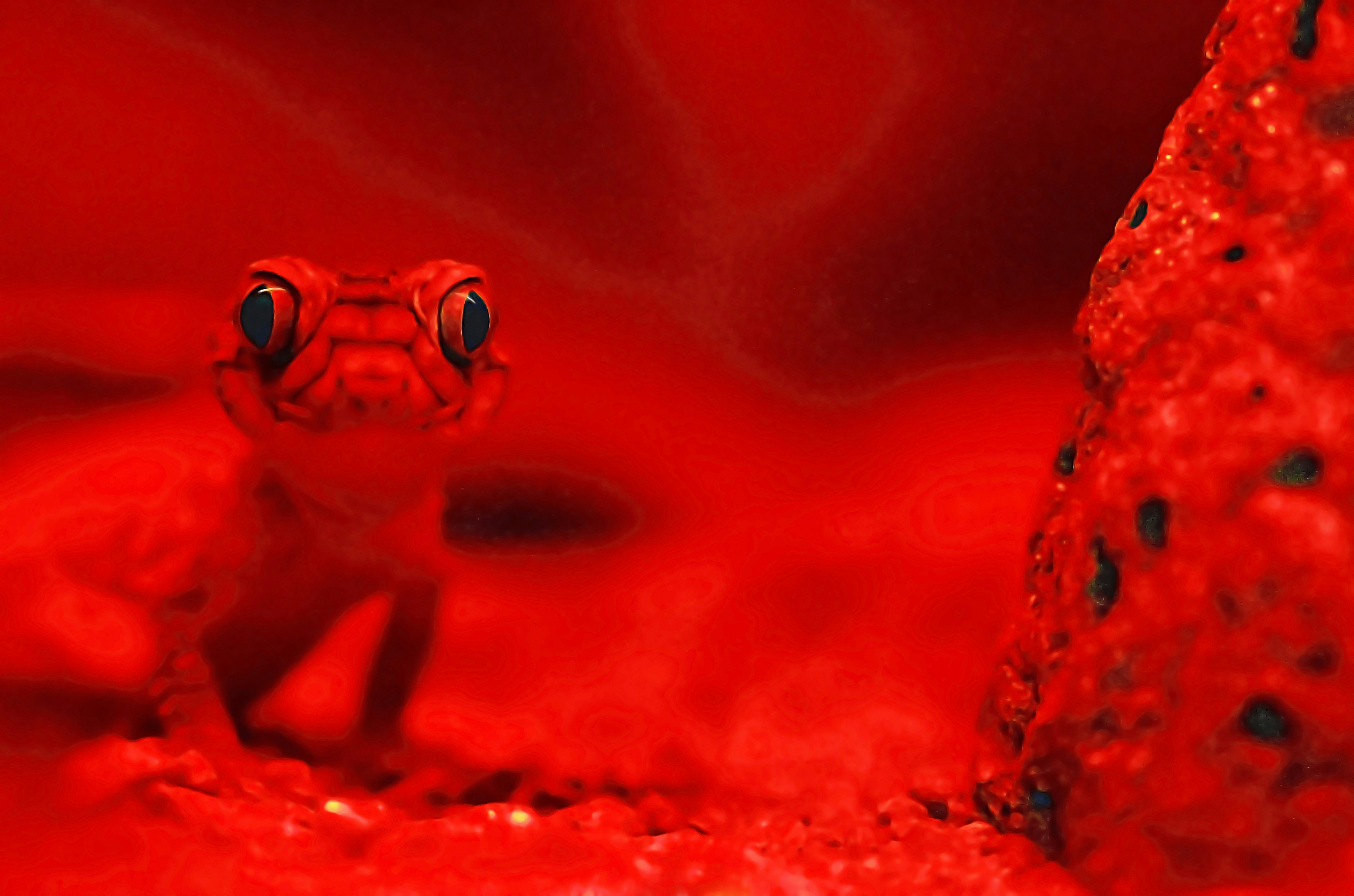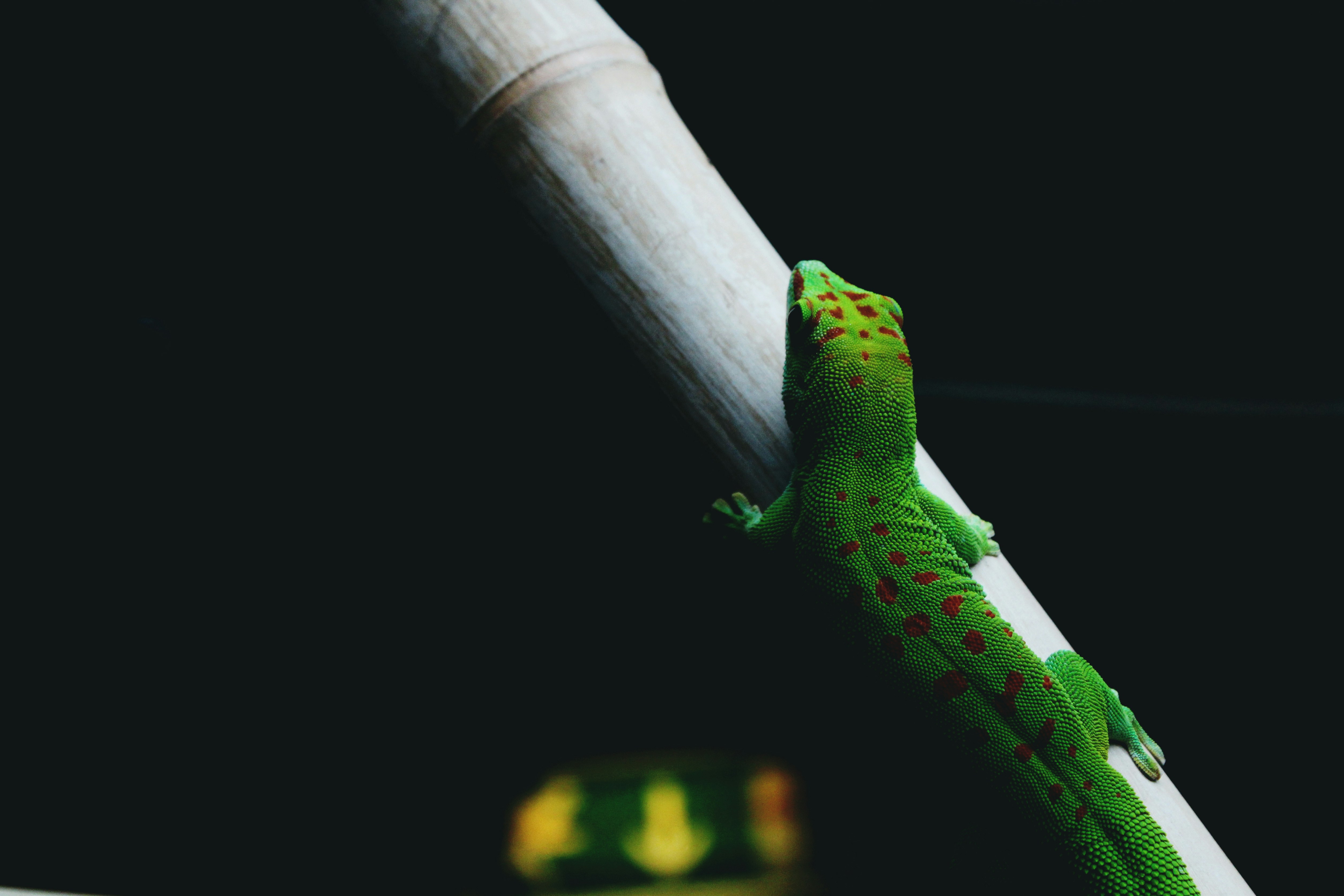
Gecko Hibernation: A Comprehensive Guide Uncover the mysteries surrounding gecko hibernation with our latest product, “All About Gecko Hibernation.” In this comprehensive guide, we provide you with essential knowledge and insights into the fascinating world of gecko hibernation. Whether you are a gecko enthusiast or a curious seeker of knowledge, this resource will equip you with valuable information about this natural phenomenon. From understanding the reasons behind gecko hibernation to learning the necessary precautions for their well-being during this period, “All About Gecko Hibernation” is your ultimate companion for unraveling the secrets of these remarkable creatures.
Gecko Hibernation
What is Gecko Hibernation?
Gecko hibernation refers to a state of dormancy entered by geckos during the colder months of the year. Hibernation is a survival mechanism that allows geckos to conserve energy and reduce metabolic processes when environmental conditions become unfavorable for their normal activities. During hibernation, geckos significantly slow down their bodily functions, including metabolism, digestion, and movement.
When and Why do Geckos Hibernate?
Geckos typically hibernate during the winter months when temperatures drop significantly. The specific timing of hibernation may vary depending on the gecko species and their natural habitat. In the wild, hibernation serves as a crucial adaptation that helps geckos survive in harsh conditions where food is scarce and temperatures are too cold for regular activity.
Geckos hibernate to conserve energy and avoid the metabolic demands of sustaining normal bodily functions during periods of resource scarcity. By slowing down their metabolic rate, geckos can survive on stored fat reserves for an extended period without needing to feed. Hibernation also enables geckos to conserve water, as they require less hydration during this dormant state.
Different Types of Gecko Hibernation
Geckos can exhibit various types of hibernation strategies based on their natural environment and biological characteristics. The most common types of gecko hibernation include:
- Brumation: This is the most prevalent form of hibernation observed in geckos. Brumation is characterized by a prolonged period of inactivity, reduced metabolic rate, and lowered body temperature. During brumation, geckos may seek shelter in burrows, cracks, or other protected areas to shield themselves from extreme cold conditions.
- Estivation: Some gecko species, particularly those inhabiting hot and arid regions, undergo a form of hibernation known as estivation. During estivation, geckos enter a dormant state to avoid the scorching temperatures and lack of water during the summer months. Estivating geckos reduce their activity levels, metabolic rate, and seek refuge in cool and shaded areas.
Preparing Geckos for Hibernation
Assessing Gecko Health and Age
Before preparing geckos for hibernation, it is essential to assess their overall health and age. Sick or weak geckos may not be suitable candidates for hibernation as their immune systems may be compromised, making them more susceptible to illness or death. It is recommended to consult a veterinarian experienced in reptile care to evaluate the health status of the geckos and determine if they are fit for hibernation.
Additionally, the age of the geckos should be taken into consideration. Young or juvenile geckos may not have built up sufficient fat reserves to sustain them throughout the entire hibernation period. It is generally advised to wait until geckos reach a certain age and size before subjecting them to hibernation.
Providing a Suitable Habitat
Creating a suitable habitat for hibernation is crucial for the well-being of geckos. The enclosure should mimic the natural environment of the gecko species to ensure their comfort and facilitate the hibernation process. The enclosure should include hiding spots such as caves or logs to mimic the natural sheltering behavior of geckos during hibernation.
The enclosure should also have proper ventilation to prevent excess humidity and disease-causing bacteria growth. Substrate material, such as peat moss or vermiculite, can be added to provide insulation and emulate the natural environment.
Adjusting Environmental Conditions
Proper adjustment of the environmental conditions is essential to facilitate a successful hibernation period. The temperature and humidity levels within the enclosure should be gradually decreased to simulate the changing seasonal conditions. This gradual change allows geckos to acclimate to the upcoming hibernation period.
It is important to monitor and maintain appropriate temperature and humidity levels specific to the gecko species. Consult species-specific care guidelines or seek advice from a reptile expert to ensure the enclosure conditions are suitable for initiating hibernation.
Developing a Feeding Schedule
In the weeks leading up to hibernation, it is important to gradually reduce the frequency and portion size of gecko feedings. This reduction mirrors the reduced metabolic rate and appetite geckos experience during hibernation.
Ideally, geckos should be provided with smaller, easily digestible meals to ensure their bodies can process the food before entering hibernation. Adjustments to the feeding schedule should be based on the individual needs and species requirements of the geckos.
Optimal Hibernation Conditions
Temperature and Humidity Requirements
Maintaining optimal temperature and humidity conditions is crucial for the successful hibernation of geckos. Temperature requirements can vary significantly depending on the gecko species. It is important to research and understand the preferred temperature range for the specific gecko species being hibernated.
The temperature within the hibernation enclosure should gradually decrease to match the natural decrease in environmental temperatures. For most geckos, a range between 50°F (10°C) and 60°F (15.5°C) is suitable for hibernation. However, it is important to consult species-specific care guidelines or seek expert advice to ensure accurate temperature regulation.
Humidity levels should be maintained at a lower percentage during hibernation. Excessive humidity can increase the risk of respiratory infections and other health issues. Aim for a relative humidity level between 40% and 50% to provide a drier hibernation environment for geckos.
Light Exposure and Photoperiod
During hibernation, geckos should receive minimal exposure to light. Limiting light exposure helps mimic the shorter photoperiod of winter and encourages geckos to enter a dormant state. Covering the enclosure or placing it in a dark area can help reduce light exposure.
It is important to note that some gecko species may still require a minimal amount of light exposure to maintain certain biological functions. Consult species-specific care guidelines or seek expert advice to determine the appropriate lighting conditions for the specific gecko species.
Choosing the Right Substrate
Selecting a suitable substrate is essential to mimic the natural environment and provide insulation during hibernation. Materials such as peat moss, vermiculite, or coconut fiber can help maintain stable humidity levels and provide insulation for geckos during hibernation. The substrate should be clean, free of chemicals or debris, and easy to monitor for cleanliness and moisture levels.
Signs of Gecko Readiness for Hibernation
Decreased Activity and Appetite
Geckos preparing for hibernation will exhibit decreased activity levels and appetite. They may become less active, spending more time resting or hiding. Their food intake will naturally decrease as their metabolic rate slows down in preparation for the dormant period.
Monitor your geckos closely for these signs and gradually reduce their feedings to match their decreased appetite. Keep in mind that individual geckos may exhibit variations in behavior, so it is essential to understand the typical behavior patterns of your specific gecko species.
Weight Loss and Body Condition
A gradual weight loss and change in body condition is expected as geckos prepare for hibernation. This weight loss is a result of the decreased food intake and slowed metabolic rate. Monitoring their weight by regularly weighing them can help ensure they are losing weight gradually and not excessively.
It is important to strike a balance between weight loss and ensuring the gecko maintains a healthy body condition. Extreme weight loss can indicate health issues or insufficient fat reserves for hibernation. Consult a veterinarian or reptile expert if you notice any drastic changes in body condition.
Changes in Skin Color and Texture
As geckos prepare for hibernation, there may be observable changes in their skin color and texture. Some gecko species may exhibit a duller or darker skin coloration during this time. The skin may also feel rougher or dry as a result of decreased humidity levels.
These changes are normal and reflect the natural adaptations geckos undergo during hibernation. However, if you notice any other abnormal changes in skin color or texture, it is important to seek professional advice to rule out any underlying health issues.
Hibernation Precautions and Risks
Monitoring Geckos Regularly
While geckos are in hibernation, it is crucial to monitor them regularly for any signs of health issues or abnormalities. Regular visual checks and monitoring of environmental conditions such as temperature and humidity are essential.
It is particularly important to watch out for any signs of distress, difficulty breathing, or unusual behavior during hibernation. If any concerns arise, consult a veterinarian experienced in reptile care immediately.
Recognizing and Addressing Health Issues
Even with proper care, geckos can encounter health issues during hibernation. It is crucial to be aware of the common health problems that can occur during this period, such as respiratory infections, dehydration, or parasitic infestations.
Regularly check for signs of ill health, including discharge from the eyes or nose, wheezing, weight loss, or abnormal feces. If any health issues are detected, consult a veterinarian with experience in reptile medicine to address the problem promptly.
Preventing Parasites and Infections
Parasitic infestations and infections can be a significant risk during hibernation. Ensure that the gecko enclosure is kept clean and hygienic to minimize the risk of bacterial or fungal growth. Regularly remove soiled substrate and clean the enclosure to prevent parasites from thriving.
Additionally, any new geckos should be quarantined and assessed for potential health issues or parasite infestations before introducing them to a hibernation environment. Consult a veterinarian for guidance on appropriate parasite prevention measures.
Hibernation Setup and Techniques
Choosing the Proper Hibernation Container
Select a suitable hibernation container that provides adequate space for geckos to move freely and comfortably during hibernation. The container should be well-insulated to maintain stable temperatures and humidity levels. Avoid using containers that are too large, as geckos may have difficulty regulating their body temperature in expansive spaces.
Certain hibernation containers may come equipped with adjustable vents to allow for proper air circulation. These vents can help regulate humidity levels and prevent stagnant air within the container.
Creating a Safe and Controlled Environment
Ensure that the hibernation container is placed in a safe and controlled environment. Protect the container from extreme temperature fluctuations or exposure to direct sunlight, as these can disrupt the geckos’ hibernation process.
Monitor the hibernation environment regularly to ensure the temperature and humidity levels remain within the required range. Utilize thermometers and hygrometers to accurately measure and maintain the optimal conditions for gecko hibernation.
Introducing Cooling Devices
In some cases, cooling devices such as reptile-specific coolers or refrigeration units may be necessary to maintain the appropriate temperature range within the hibernation container. These cooling devices must be carefully selected and used according to the specific needs of the gecko species.
It is crucial to research appropriate cooling devices and consult reptile experts or veterinarians experienced in gecko care to ensure safe and effective use. Improper use of cooling devices can lead to health issues or even cause fatal harm to geckos.
Managing Hibernation Duration
The hibernation duration for geckos should mimic their natural hibernation period in the wild. However, it is essential to remember that optimal hibernation time can vary between gecko species. Consult species-specific care guidelines or seek expert advice to determine the appropriate duration for hibernation.
Avoid prolonging the hibernation period beyond what is considered natural for the species, as this can increase the risk of health complications or reduced fertility in geckos.
Hibernation Care and Maintenance
Minimal Handling and Disturbance
During hibernation, geckos should be left undisturbed as much as possible. Handling or disturbing the geckos can disrupt their hibernation process and cause unnecessary stress. Any interactions with geckos during hibernation should be limited to essential health checks or maintenance tasks.
When necessary, handle geckos gently and with caution, taking care not to disturb their hibernation environment or cause excessive stress.
Providing Water and Hydration
Although geckos require less hydration during hibernation, it is essential to provide access to water to prevent dehydration. This can be achieved by including a small water dish within the hibernation container. The water dish should be shallow to minimize the risk of accidental drowning.
Check the water dish regularly to ensure it remains clean and filled with fresh water. Avoid using deep water dishes that can increase humidity levels within the hibernation container.
Monitoring Temperature and Humidity
Maintaining the optimal temperature and humidity levels during hibernation is critical for the well-being of geckos. Regularly monitor the temperature and humidity within the hibernation container using appropriate instruments such as thermometers and hygrometers.
Make adjustments to the hibernation environment as necessary to maintain stable conditions. Avoid sudden or drastic changes in temperature or humidity, as this can disrupt the hibernation process and stress the geckos.
Ending Hibernation and Transitioning
Increasing Temperature Gradually
When it is time to end the hibernation period, gradually increase the temperature within the hibernation container to stimulate the geckos’ metabolism and awake them from their dormant state. This temperature increase should mimic the natural temperature changes that occur during the transition from winter to spring.
Monitor the geckos closely during this transition period to ensure they are responding positively to the temperature increase. If any health issues or abnormalities are observed, seek professional advice.
Reintroducing Feeding
After the geckos have awakened from hibernation, gradually reintroduce feeding to their regular schedule. Start with small meals to allow their digestive systems to readjust. Provide easily digestible, nutritious food to replenish their energy reserves.
Monitor the geckos’ feeding response, weight gain, and overall health during this period. If any concerns arise, consult a veterinarian or reptile expert.
Observing Post-Hibernation Behavior
Following the hibernation period, geckos may exhibit certain behavioral changes. They may initially appear sluggish or disoriented as they adjust to normal activity levels. Observe their behavior closely to ensure they resume normal feeding, activity, and behavior patterns.
Monitor the geckos’ overall health and behavior for any signs of distress or abnormality during the post-hibernation period. Seek professional guidance if any concerns arise.

Potential Troubles and Problems
Hibernation-related Health Issues
Despite proper care and preparation, geckos can still encounter health issues during hibernation. Common hibernation-related health issues include respiratory infections, dehydration, bacterial or fungal infections, and low body condition.
Regular monitoring, proper environmental conditions, and appropriate handling of any detected health issues can help minimize these potential problems. Seek professional advice if any concerns arise.
Parasites and Infections
Parasitic infestations and infections can pose risks to geckos during hibernation. It is important to implement proper hygiene practices, including maintaining a clean and hygienic enclosure, regular substrate cleaning, and quarantine protocols for new geckos.
Consult a veterinarian experienced in reptile care to establish an appropriate parasite prevention and treatment plan to minimize the risk of parasitic infestations and infections.
Abnormal Behavior Post-Hibernation
Some geckos may exhibit abnormal behavior or health issues following hibernation. This can include loss of appetite, noticeable weight loss, lethargy, or unusual aggression. These signs may indicate underlying health problems or complications resulting from the hibernation period.
If any abnormal behavior is observed, it is crucial to seek prompt veterinary attention from a professional with experience in reptile care.
Gecko Hibernation in the Wild
How Geckos Hibernate in their Natural Environment
In their natural habitat, geckos have evolved specific adaptations to survive during hibernation. They seek shelter in protected areas such as burrows, rock crevices, or leaf litter to shield themselves from extreme temperatures and predators.
Geckos utilize the surrounding environmental cues to determine the appropriate time to enter hibernation. Decreasing day lengths, lowering temperatures, and changes in food availability signal the geckos to prepare for dormancy.
Adapting to Varying Hibernation Conditions
Geckos exhibit remarkable flexibility and adaptability to varying hibernation conditions. Different gecko species have unique physiological and behavioral adaptations that enable them to withstand cold temperatures or prolonged periods of resource scarcity.
Some gecko species can hibernate in colder regions with freezing temperatures, while others successfully undergo hibernation in warmer climates with minimal temperature fluctuations. These adaptations allow geckos to survive and thrive in diverse habitats around the world.
Survival Adaptations during Hibernation
During hibernation, geckos rely on various survival adaptations to endure the dormant period. They slow down their metabolic rate and enter a state of reduced physiological activity, conserving energy and relying on stored fat reserves.
Geckos also minimize water loss by reducing their hydration requirements during hibernation. This adaptation allows them to withstand thirst for extended periods when water sources are scarce or frozen.
In addition to physiological adaptations, some gecko species are capable of regenerating lost tails or regrowing damaged tissue during hibernation. This regenerative capability plays a vital role in their overall survival and reproductive success.
In conclusion, gecko hibernation is a natural process that allows these reptiles to conserve energy and survive during periods of unfavorable environmental conditions. Proper preparation, care, and monitoring are essential to ensure the well-being and successful hibernation of geckos. By understanding their specific needs and providing suitable conditions, gecko owners can support their geckos’ hibernation process and contribute to their overall health and longevity.



